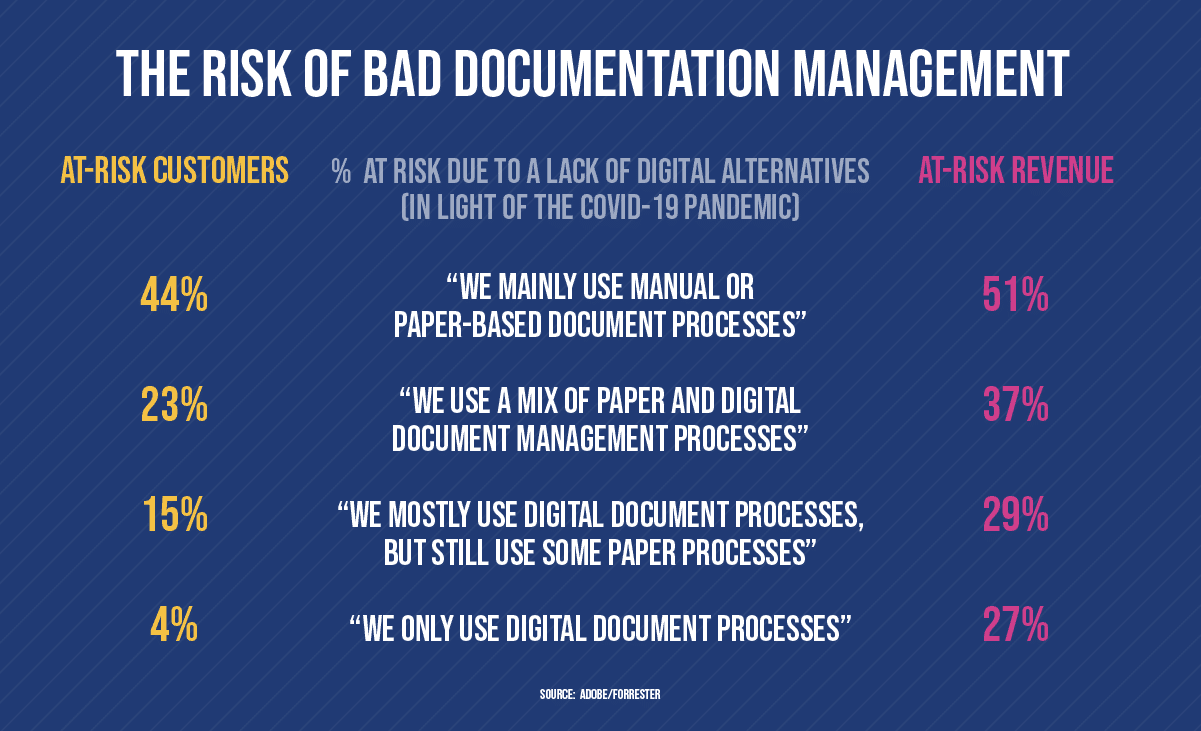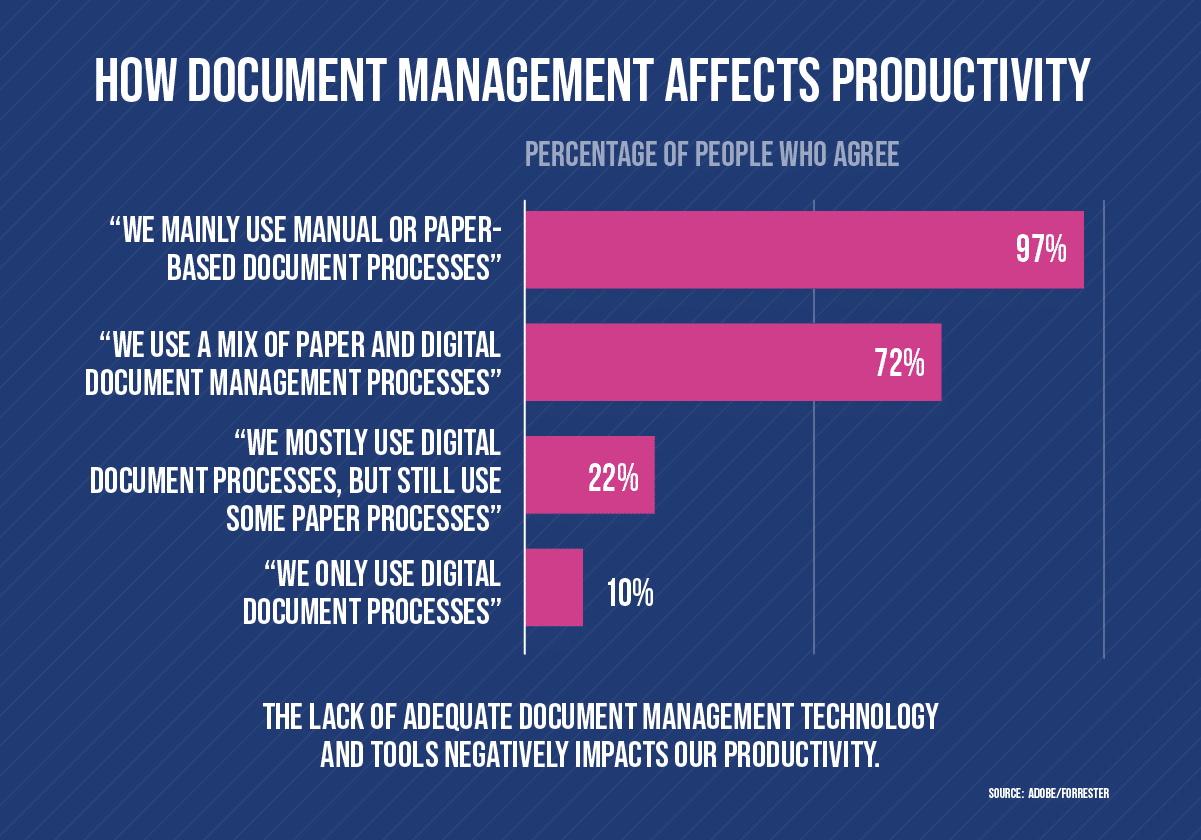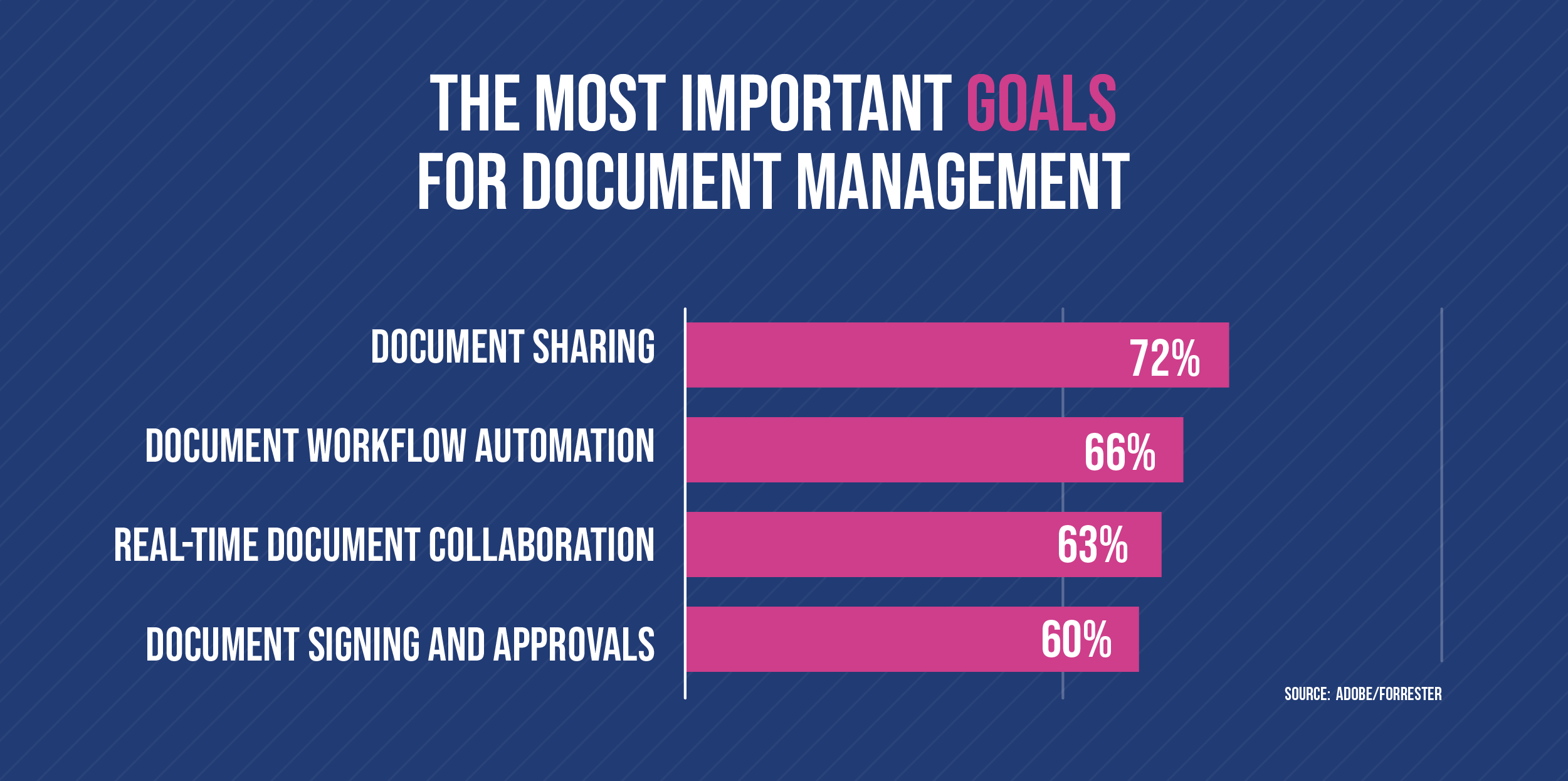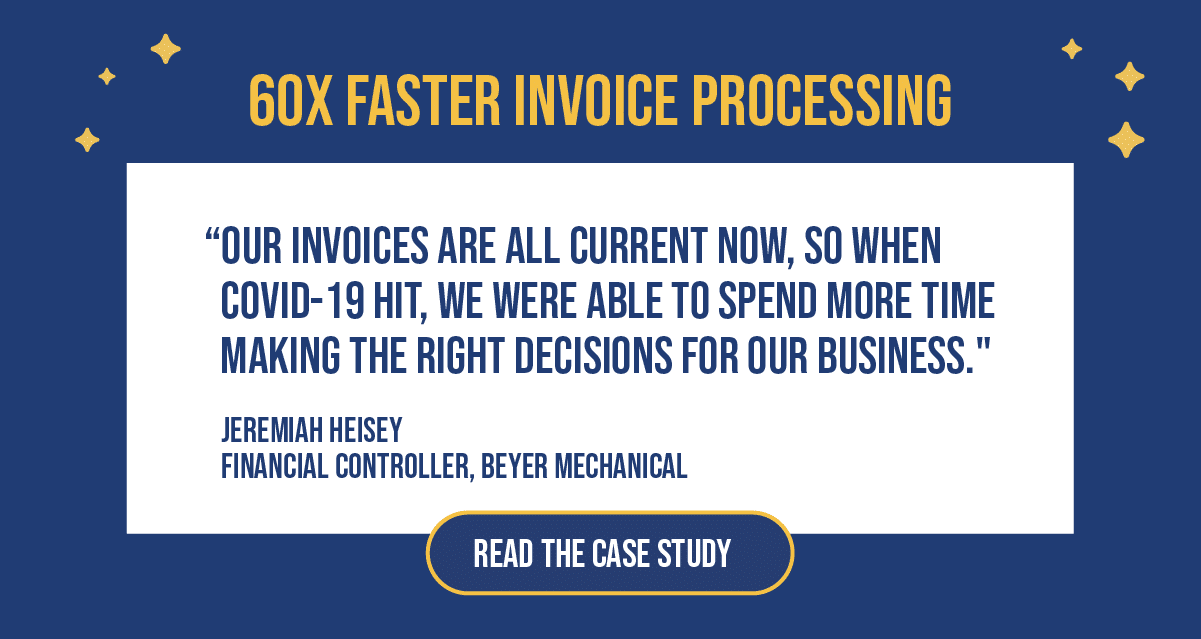Achieve Vendor Document Management Nirvana with Stampli

Managing vendor documents can be a nightmare.
Think about it. Vendor management involves a lot of documentation – and a lot of tracking, entering, organizing, and storing documents.
Keeping documentation straight and up-to-date can overwhelm your business fast.
It’s not a small problem. In 2021, Stampli surveyed finance leaders across the US. Over one-third said that they invested in automation because their teams were overwhelmed with paperwork. Workflow bottlenecks and reducing employees’ time on low-value tasks (wild goose chases) were the second and third biggest reasons.
Here’s what those CFOs are talking about.
Say I have a medium-sized company that does business across the US.
We do business with 1,000 vendors in multiple locations. Each of those vendors will send at least 12 invoices a year, and each will be associated with at least one purchase order and shipping receipt. On top of that, we moved to a hybrid working environment after the pandemic, so half my AP team is working from home.
I’ll do the math for you: That’s 3 documents per month per vendor for a total of 36,000 vendor documents. Each of those documents has to be processed, tracked, and stored across multiple locations by employees who may or may not be in a physical office.
And that’s just the invoices.
My business also requires thousands of vendor documents like contracts, emails, SOWs, RFPs, and letters that need to be tracked and managed so things run smoothly. Without a document management system, it’s chaos. Documents go missing, vendors don’t get paid, and things don’t get done.
As shown below, businesses with digital document management processes have less business risk. In an Adobe/Forrester survey of 450 senior business decision-makers, researchers asked businesses to report the percentage of their customers who were at risk of leaving and the percentage of their revenue at risk of decreasing.
Companies with no digital document processes reported 10X more customers at risk of leaving than businesses with automated processes. These same businesses also had twice as much revenue at risk of decreasing.

Bottom line: I need a vendor management system, or I’m dead in the water.
Read on to learn how to manage vendor documents and get the chaos under control with an automated document management solution like Stampli’s Advanced Vendor Management.
FYI, Stampli is an all-in-one accounts payable platform that combines AP communications, digital documents, and payments in one place. As the industry leader in AP automation, Stampli gives you full control over vendor management.
The problem with paper
I run BTB Tech, a mechanical and engineering contracting company serving builders and property owners across the US. We provide design, installation, and maintenance services for HVAC, mechanical, and safety systems in commercial buildings.
We’re a fast-growing company in a rapidly changing business. Our clients depend on us to help them build and maintain safe and comfortable buildings, so our work has no room for error. We need to stay current with technology, building codes, safety standards, and environmental regulations – and so do our vendors. We rely on documentation to ensure that our vendors comply with our requirements.
That means we’re very serious about vendor document management. Here’s why:
Compliance with regulations
It’s crucial that our work is compliant with building, safety, and environmental regulations. That means our vendors must provide certifications, licenses, and other documentation confirming that they meet these standards. It also means that we need to stay on top of these documents to ensure vendors are compliant before hiring them for a project.
Proof of insurance
In our work, a mistake can be costly. We need to know if a vendor carries adequate insurance coverage before adding them to a project. Our document management process needs to include steps to obtain insurance certificates from vendors and ensure they’re up-to-date.
Payment efficiency
We need to allocate vendor costs by project to keep costs under control and ensure each project is profitable. That means we need to identify and track project costs in accounts payable, and we also need to be able to match the vendor invoice against the relevant purchase order and receipts for the project. Keeping track of these documents makes it easier for our accounts payable team to perform 3-way matching.
Document control
Before the pandemic, we were able to handle our vendor documents manually.
It wasn’t pretty, and it took a lot of time, but it worked.
We used spreadsheets, email, and file cabinets to store, index, and manage documents and keep the work going.
The pandemic changed all that. Our employees started working from home, which made it hard to keep on top of documentation, especially with half our documents stored on-premise. Things began to fall through the cracks, we fell behind in our information management, and our project management slowed down.

In a way, the pandemic saved us. Construction slowed down to a standstill, so we were able to manage the few projects we had. But when construction started back up, we were in trouble. We needed a solution, fast.
How to fix vendor document management
In this podcast, Dave Storer, CFO of ConstructConnect, talks about how to build guiding structures to manage change in finance departments. Fixing our document workflows was tough, but we took a structured approach that made the job more manageable.
Here’s the big picture:
Step 1: Set clear and consistent document requirements
We started by talking about what vendor documents we actually needed and the process we’d follow to determine what additional documents we’d need for each new project we took on.
It took time, but we came up with two key tools:
1) a list of the common documents we require from each vendor, and
2) a discovery process that we could use to assess what documents we’d need for each project.
Here’s how that looks in the real world:
- Each vendor must sign a contract and provide insurance and professional certifications before we add them as a supplier.
- For each new project, our planners collect the required building codes, standards, and other information from the builder or building owner. Our legal team also verifies the state or local building codes we must follow.
- We inform our vendors of these project-specific documentation requirements. We won’t add a vendor to a project until we confirm that they have provided us with up-to-date documentation.
Step 2: Create a document management system
The next step was to create a place for all those documents to live.
Our biggest need was accessibility. Our employees travel a lot and must be able to upload and access documents from job sites. We needed a solution that was user-friendly, centralized, secure, and remotely accessible. Other needs were tracking document changes, organizing documents by metadata, vendor, or project, index document contents, and notifying us when a document will expire or renew.
We looked at several options, like building a solution in Sharepoint or using a cloud-based storage service like Dropbox, but none had the functionality we were looking for. We eventually decided on an automated document management solution that worked for us.
Step 3: Automate with document management software
Setting document management requirements and streamlining manual processes made a big difference in how our business handles vendor documents. Things didn’t fall through the cracks as much, and we could execute on projects knowing our vendors complied with our business needs.
However, we still had a couple of issues.
First, we still needed to work on digitizing and archiving documents. Our on-site teams rarely come into the office when they’re on a project, so paper documents were getting misplaced – left behind in vans or stuck in a binder or file cabinet. We needed a way for these employees to upload documents wherever they were.
Second, although we streamlined our AP workflows, our team was still overwhelmed by paperwork. We got a lot of new projects when construction restarted after the pandemic. With that new work came a lot of new vendors and a lot of invoices. Efficient as they were, our manual business processes couldn’t keep up with the volume, and we were constantly late paying our suppliers.

We already use ERP automation for payroll and other areas of our business, so we looked for an automation solution that would meet our needs. In a nutshell, we needed a vendor document management system that could:
- Capture, upload, and share documents from anywhere, especially on-site
- Enforce vendor compliance with document requirements
- Centralize document archives and make them easily accessible
- Streamline document sharing with business systems like our CRM and ERP
- Use a standardized and consistent filing and indexing system so we can find documents quickly
- Provide an intuitive and user-friendly interface so employees and stakeholders can access and view documents anywhere on any device
- Manage document lifecycles and notify when a document is expiring
After looking at several solutions, we decided on Stampli Advanced Vendor Management. Our CFO was familiar with Stampli’s all-in-one AP automation platform and knew they had a great reputation in the construction industry.
More on that later.
Step 4: Train employees (and vendors) on document management
This was a tricky one.
Once we set our document management requirements and implemented an automated management system, we needed to bring everyone on board. We’re a busy company, so getting employees, stakeholders, and vendors up to speed took some time. However, they got with the program once everyone realized they could scan, upload, and view all the documents from their phone or tablet.
The new system made a big difference to our people in the field. Now, if an electrician needed to check a document, they could just pull it up on their phone rather than having to stop work and go to their van to find it.
Step 5: Monitor vendor performance
Although we didn’t set out to use the document management system to monitor vendor performance, it turned out to be a great performance management tool. We could upload performance reports to the system and check vendor performance against the service-level agreement (SLA) in their contract. We could also easily see if a vendor had issues providing the right documentation and work with them to get on track.
After following these steps, we had a seamless vendor document management process that let our business stay compliant, adapt to change, and build good vendor relationships. We handled the increased project volume and kept our clients’ buildings safe and comfortable.
It all came down to choosing an AP solution provider who was flexible, understood our needs, and provided excellent customer support.
The ideal solution: Stampli Advanced Vendor Management
When you think about vendor document management, you might not think of an AP automation platform, but Stampli Advanced Vendor Management is the right fit. It’s the ideal solution for any business that needs to manage a ton of vendor documents.
Here’s why.

In a nutshell, Stampli’s Advanced Vendor Management solution automates vendor onboarding. It captures and stores critical vendor documents like contracts, certificates, and licenses so a vendor can become compliant and get up and running quickly. Procurement and project management teams can check at a glance if a vendor is compliant before adding them to a project.
That’s not all. The platform also collects and maintains vendor information like 1099s, payment methods, bank account details, addresses, and contact info for key personnel, which makes life a whole lot easier for AP and finance teams.
Advanced Vendor Management checks every box on our list. It can be accessed from any device, allowing vendors to upload documents from the site. It’s secure, and it stores documents in a central and easily accessible location with easily configurable permissions. This is a great feature because it allows supervisors to confirm vendor documents on-site using their phones – without stopping work while everyone goes on a wild goose chase to find the documents.
Centralizing vendor documents also helps maintain a complete AP audit trail in real-time – which is nice to have when it’s audit time.
But technology and functionality are only half the battle. The best automation platform isn’t worth much without customer support.
Fortunately, customer support is where Stampli really shines. Stampli’s Customer Support team guides you through every step of the setup process. They help with everything, including implementation, onboarding, and training. With Stampli’s support, you can get our system up and running in weeks instead of months.
Get on top of your vendor document management today. Contact Stampli to set up a free demo.
